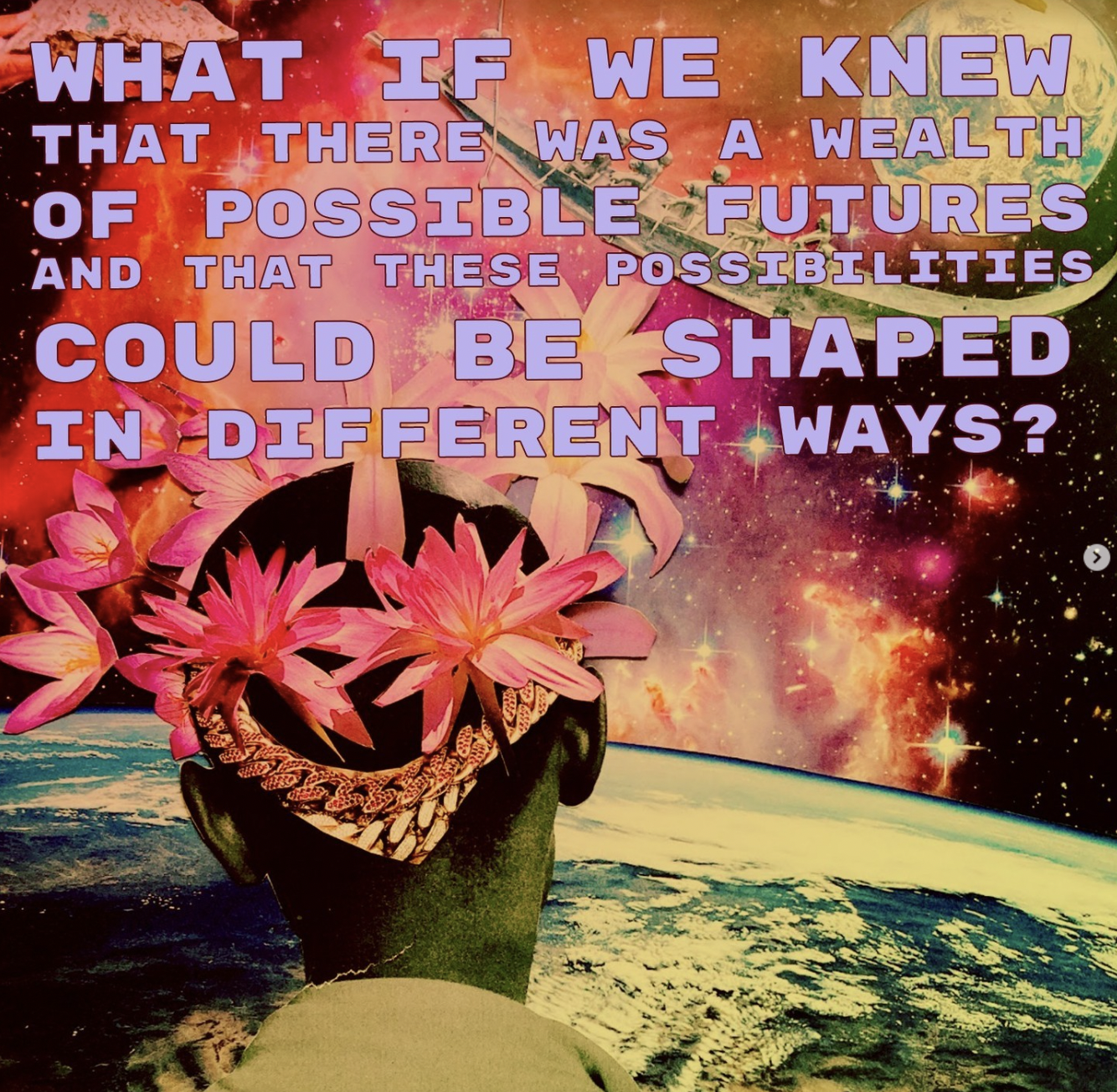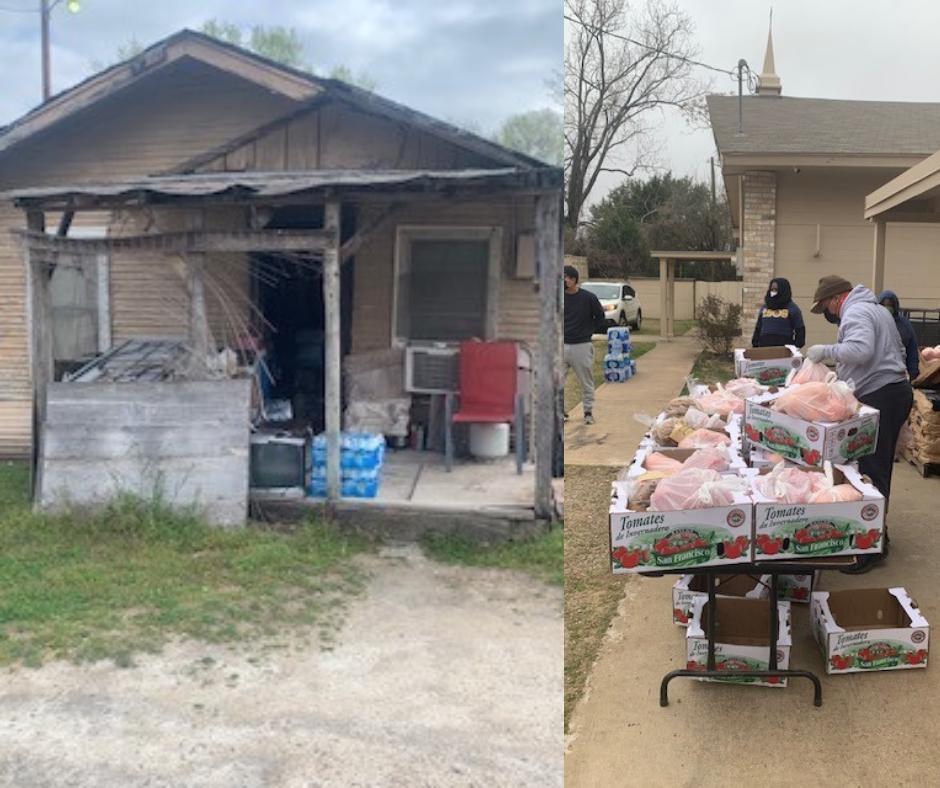Movement Strategy Center on Shifting Philanthropic Power Dynamics Towards Interdependence and Resilience
Every degree of warming intensifies the risk of species extinction, highlighting the urgency of addressing climate change. As we watch the weather report on any given day, the unfolding realities of our changing climate become strikingly evident — the record highs in Portland, Boise, and Salt Lake City juxtaposed against unprecedented cold on the East Coast are stark reminders that our weather patterns are shifting in real time. The implications of these extremes cannot be ignored, it’s as if nature is pleading for our attention. It is a resounding wake up call, urging us to acknowledge the pressing need to address climate change and foster a sustainable future for generations to come.
These shifting weather patterns are amplifying pressing societal issues — homelessness is on the rise, thanks in part to soaring rent and food prices. It is heartbreaking to see how these issues exacerbate the number of lives lost to both scorching heat and bitter cold. But of course food prices are going to rise when agricultural states like California grapple with drought followed by record flooding and how that impacts food production. Taken together, it’s impossible to deny the interconnected nature of climate change, social inequity, and economic disparity. Especially among Black and Indigenous communities which continue to struggle against remnants of colonialism that perpetuated economic and social inequities.
The Only Solutions are Real Solutions
We find ourselves at a critical crossroads, where addressing these intersectional challenges requires not just environmental action but a profound examination of systemic issues within philanthropy. A timid or half-hearted response is simply not enough.
Taj James, one of Movement Strategy Center’s founders, believes “the only solutions are real solutions.” At MSC, that comes down to a fair and equitable society, one that moves away from an extractive economy and embraces ecologically sustainable livelihoods, democratic governance, and ecological resilience. Now is the time to invest in a Just Transition that boldly paves the way towards a cleaner, more resilient future that leaves no one behind and addresses past injustices.
While Big Philanthropy understands the value of organizations that believe in this way forward, the powers that be often fail to invest significant resources in helping such organizations scale up their operations for broader impact. That’s why it’s so important to not only give generously but rethink the ways funds are distributed.
Funding was generous during the COVID-19 pandemic — there was a surge of much needed unrestricted funding for general operating support. But, much of that funding came in the form of a one year grants. Those one year grants have expired; and the pandemic has more or less ended. As writer Imani Barbain now notes, the end of the pandemic only signals the end of support. Those one year grants fell short of providing holistic and infrastructural support to organizations, and such limited support can leave organizations unchanged or, worse, in an even more precarious situation with limited alternative options. This is an episodic support model that jeopardizes sustainability and cannot move the needle in terms of the societal and climate challenges ahead.
We call this a scarcity mindset and it stems from a patriarchal system where donors often doubt the ability of organizations to efficiently utilize funding and limits the sort of unrestricted support grassroots organizations need to keep the lights on. Another often unspoken issue is that many donors are often driven by peer recognition which can keep money from leaving a donor’s network and does more for that person’s social status than for any grassroots organization.
Yet, a shift is underway as more philanthropic organizations recognize that their funding structures must become more equitable and will require relationship-centered change management, investment in infrastructure — essential resources, systems, and capacity-building initiatives, and a willingness to rise to new and surprising challenges.
For over 20 years, MSC has worked toward normalizing a more equitable and relationship-oriented philanthropic construct that nurtures an ecosystem of effective activism built on supporting a Just Transition. Practically, MSC believes in the importance of releasing funds to fully support programs and infrastructure while moving away from a scarcity model of episodic giving. And, crucially, we believe in creating sustained long term relationships that support those best able to improve lives at the intersection of climate and social justice.
Addressing Economic Disparities Begins With How Organizers are Paid
We need to start with the backbone of movement work: the folks on the frontline, the activists and organizers who, unfortunately, are rarely well paid. Those closest to the ground organizers are paid even less, and this disparity becomes even more pronounced along race and gender lines which perpetuate systemic inequities. It is not uncommon for those dedicating themselves to the most impactful work to earn less than a living wage, forcing them to juggle multiple jobs to make ends meet.
“For most nonprofit employees, work is about much more than money. People want to make an impact beyond themselves, to do good. Yet our society repays their civic commitment by paying them less than they’re worth and expecting them to be satisfied. At a minimum, we need to better honor their contribution by giving them the tools they need to succeed,” says Peter Manzo, executive director of the Los Angeles based Center for Nonprofit Management. Philanthropy must also consider how class shapes perceptions and values around work and pay, and grapple with how those theorizing and strategizing about movement work are paid more than those actually doing the work. At the end of the day, every individual — whether they’re making our world a better place from the ground or the conference table — deserves to receive a fair and just wage that sustains a decent standard of living.
Embrace Abundance
There is no valid justification for not operating from a place of abundance and collaboration in philanthropy. In their altruistic effort to be frugal, many donors withhold investment in crucial infrastructural areas such as talent, strategy development, research, evaluation, technology, and relationship building, as highlighted by Forbes. This reluctance also extends to their grantees, setting arbitrary limits on nonprofit overhead while expecting results without providing adequate funding for evaluation tools. These tendencies of destructive frugality are explored in Kris Putnam-Walkerly’s book Delusional Altruism: Why Philanthropists Fail To Achieve Change and What They Can Do To Transform Giving.
Further, there is an artificial governance that requires private foundations to give out just five percent of their endowment each year. But why can’t these institutions embrace abundance and go beyond this mandate which leaves 95 percent of funds in an account somewhere? Further, why can’t endowments borrow against their assets to have even more funds to give away?
The rich know how to use financial markets to grow their fortunes. They should be encouraged to do the same thing to grow their charitable trusts — especially if they are hoarding such a large percentage of it. Doing so could increase the size of their grants, change how those grants are distributed, and shift what that money can be used for.
Despite this, Kathy Moore, MSC’s Senior Director of Advancement, is hopeful and believes we should “embrace the power of abundance.” She says “the philanthropic and nonprofit sectors can operate from a place of abundance — and in fact, by operating from this place, we unlock a realm of boundless creativity, daring experimentation, and courageous risk taking. It is through this audacious stance that we can unearth genuine solutions capable of transforming our systems and culture at their core.”
“The philanthropic and nonprofit sectors can operate from a place of abundance — and in fact, by operating from this place, we unlock a realm of boundless creativity, daring experimentation, and courageous risk taking.”
An Optimistic Look Forward with Regranting, CDCs, and SIFs
We remain optimistic that trends are shifting. The Center for Effective Philanthropy’s (CEP) recent examination of MacKenzie Scott’s grantees finds emerging empirical data indicating that when nonprofits receive large, unrestricted grants, the effects are “dramatically and profoundly positive.” Scott, philanthropist and ex-wife of Amazon founder Jeff Bezos, is not alone: the Ford Foundation continues to commit billions of flexible dollars in unrestricted grants including MSC’s BUILD Grant. Launched in 2016, it was intended to bolster MSC’s long term capacity to dismantle inequality and it proudly emphasized the importance of “unrestricted funding combined with dedicated institutional development” for stronger and more resilient organizations of all structures, sectors, and sizes. Programs like the BUILD Grant are a good first step, but philanthropy should consider even longer term continued investment to ensure that the building phase can be maintained and organizations can remain stable well beyond the development and implementation phases.
Take, for instance, our partnership with the JPB Foundation. Launched in 2019, the foundation awarded MSC $3.5 million over three years for “Building Bold Environmental Health Movements that Center Communities at the Frontline of Environmental Health Inequity and General Operating Support.” Though the grant was for general operations, it was intended for specific purposes and goals as outlined by the JPB Foundation. However, as MSC found itself facing operational challenges in 2020, the foundation gave us flexibility to use the money for whatever was needed to stabilize the organization. In addition, they simultaneously worked with us to expand the scope of our regranting partnership to provide additional flexible revenue for our core infrastructure needs. In late 2022, the JPB Foundation renewed our general operating grant for another $3 million over three years, this time for “Securing Next Steps for Our Movement” — ensuring ongoing stabilization, strengthening, and expansion of the work already accomplished in the first three years, and including service expansion for MSC’s nearly 40 Fiscally Sponsored Projects (FSPs). They even encouraged and supported our interest in using a portion of the grant to set up a reserve fund to ensure future stability and success.
Donor Advised Funds (DAFs) are another area that has experienced substantial growth, but their current structure can perpetuate wealth accumulation rather than benefit communities in need. This highlights the need for a radical new approach, exemplified by MSC’s new DAF model. Launching later this year, the program will direct capital investments to historically excluded communities through local community development corporations (CDCs). “In a world where DAFs are often criticized for their misuse, MSC’s DAF program stands out by infusing our values and empowering philanthropists to make a difference.” Lauren Wheat, Interim Co-Chief Fiscal Sponsorship Officer, continues: “while traditional DAFs may be associated with tax evasion during financial windfalls, MSC’s embraces a higher purpose. By becoming part of the MSC ecosystem, DAF fund holders gain proximity to grassroots activists, enabling them to evolve into better philanthropists. With stringent requirements and annual fees contributing to transformative movement building, MSC’s DAF redefines the landscape of giving.”
In a perfect world wealthy individual donors would move away from DAFs in favor of trust-based relationships with equitable intermediaries, like MSC. Donors could initiate a general purpose or vision and even act as an advisor, but they would relinquish the power and control that comes with a DAF. Mohini Tadikonda, MSC’s Chief Advancement Officer, calls these arrangements — Special Interest Funds (SIFs) — “the future of equitable grantmaking.”
“While traditional DAFs may be associated with tax evasion during financial windfalls, MSC’s embraces a higher purpose. By becoming part of the MSC ecosystem, DAF fund holders gain proximity to grassroots activists, enabling them to evolve into better philanthropists.”
MSC introduced a SIF program in 2022, aiming to support grassroots frontline work in communities with limited access to philanthropic resources. This program rapidly and equitably moves capital, supports community leaders, and transfers control from wealthy donors. Currently, MSC holds several SIF charters, focusing on financial literacy, decarbonization, capacity building, and community organizing — like the Sandbranch Revitalization Fund in support of a Texas Freedman’s Settlement.
There are several ways that SIFs can support a more equitable approach to philanthropy. For one, community initiated charters like the Sandbranch Revitalization Fund can move more money more quickly and more deeply into the community, and do so with little overhead. This ensures that the majority of that money actually goes to support the community in ways the community best sees fit. Meanwhile, pooled funds, like the Equitable Intermediary (EI) fund MSC manages, allows foundations to come together on a general purpose or vision and enter a trust-based relationship with equitable intermediaries. This relationship ensures that funding is being used in a way that best supports the vision of the donors and the needs of communities. To further stretch this funding, Intermediaries can require higher administrative allocations from the foundations to help offset the significantly lower administrative allocations offered to the community initiated funds.
Big Philanthropy is required — or at least encouraged — to give out five percent of their corpus each year. But committing to longer term relationships and creating real climate solutions will require more than five percent. The upside of larger grants and longer commitments mean greater impact. The downside: change takes time, and in our capitalist system, philanthropy can be overlooked. Despite this, MSC — and many other organizations — are developing innovative ways to stretch resources, repair past harms, and make a difference.
Social movements are not something that can be achieved in a single day. It takes time, dedication, and commitment to create lasting change. Thus, philanthropic partnerships must be long term and informed by the real practices and challenges that communities, frontliners, and movements are facing. By building partnerships that are rooted in this commitment, we can work towards a future where everyone has the resources and support they need to thrive. To paraphrase James: we can’t use the same old ways of thinking that got us into this mess in the first place. We need to heal and reconnect at the root. Our collective survival on this planet depends on it. So give generously, distribute wisely, and let’s work together to create a world that’s sustainable, just, resilient, and equitable for all.
Check out Mark Wagner’s work on his website and on Instagram.





